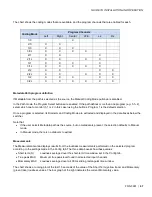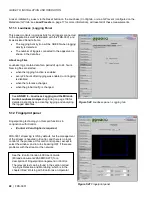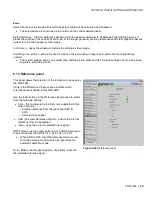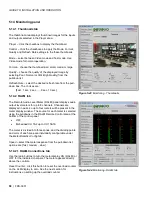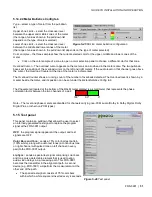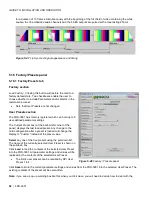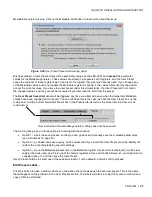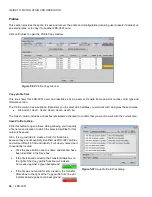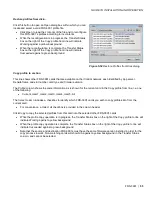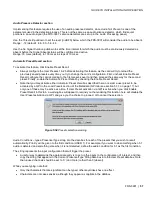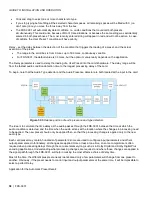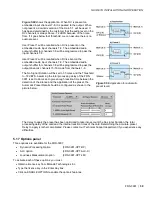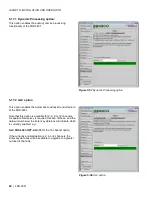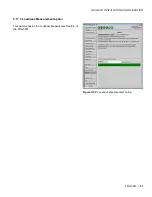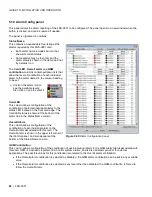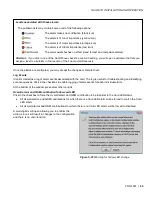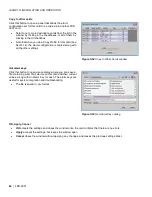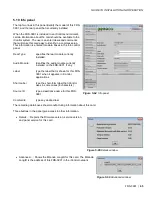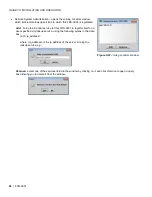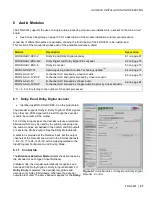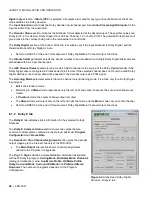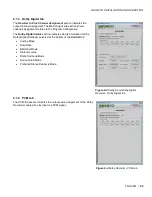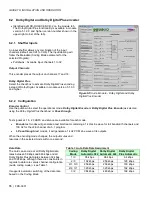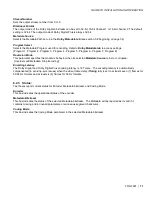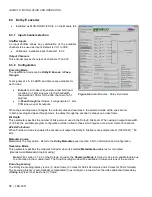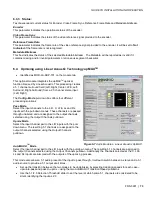
GUIDE TO INSTALLATION AND OPERATION
58
| FRS-3901
•
Click and drag to select one or more characters to type
•
If you stop typing before filling all the selected character spaces, all remaining spaces will be filled with X (i.e.
don’t care) once you move the focus away from the box.
•
The FRS-3901 will automatically detect conflicts, i.e. audio conditions that could call both presets
simultaneously. This could arise because of Don’t Care situations, or because the same string was accidentally
entered in both preset boxes. The most recently entered string will appear in red and will not be active. In case
of conflicts, the User Preset 1 condition will have priority.
Delay – set the delay between the detection of the condition that triggers the loading of a preset, and the actual
execution of the preset.
•
The range in the scroll box is from 0 msec up to 500 msec, continuously variable.
•
For FRS-3901, the default value is 33 msec, but the optimum value really depends on the application.
The Delay parameter is used to delay the loading of a User Preset into the card’s hardware. The delay range will be
from the fastest audio condition detection time to the longest processing delay of the card.
To begin, note that the Audio Type detector and the Audio Presence detector are both located at the input to the card:
The idea is to calculate the time delay as the audio passes through the FRS-3901 between the time at which the
audio condition is detected, and the time when the audio arrives at the location where the changes in processing need
to be applied. The new preset should only be applied then, so that the processing change is applied only to the new
audio type.
Each card preset may contain hundreds of parameters: some are used to configure input parameters and others
output parameters. Unfortunately, all changes are applied more or less at one time, so some compromise is often
required when processing delays through the card are relatively long, such as in Dolby Digital and Dolby Digital Plus
encoding applications. Understanding what processing changes are required, and where those changes are applied in
the signal path through the FRS-3901, will help in making the most effective choice of delay time.
Most of the time, the different presets are nearly identical and only a few parameters will change from one preset to
another. Obviously, if the preset needs to control input and output parameters at the same time, it will be impossible to
select a perfect Delay.
Application for the Automatic Preset Recall:
Figure 5.55
Relative position of audio presence and type detectors




